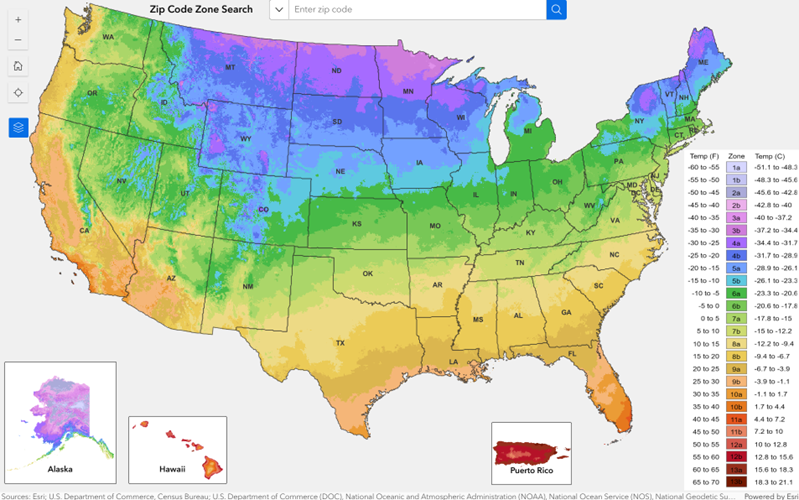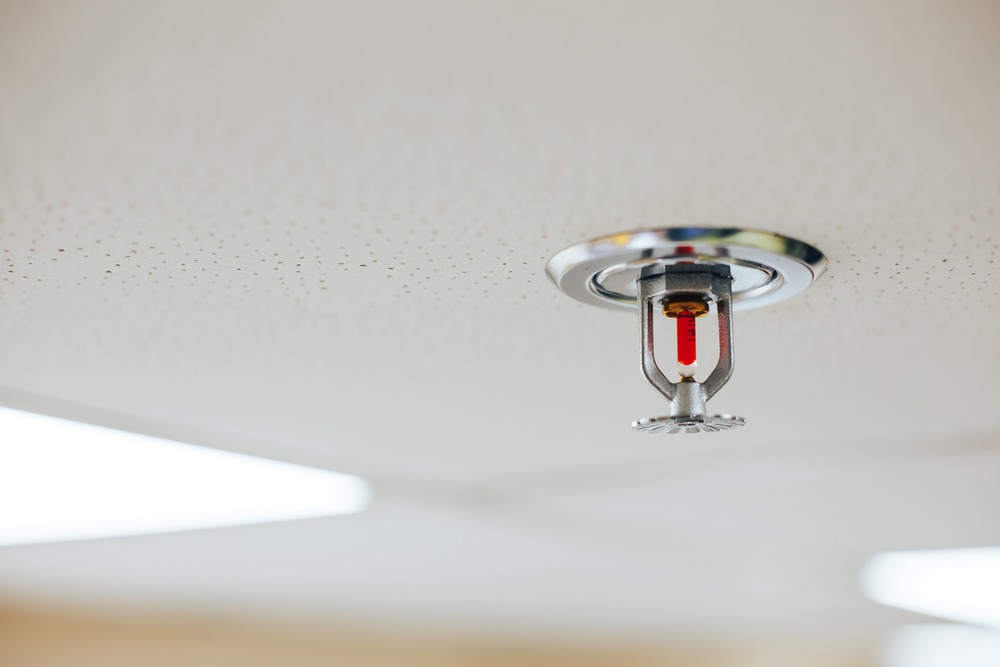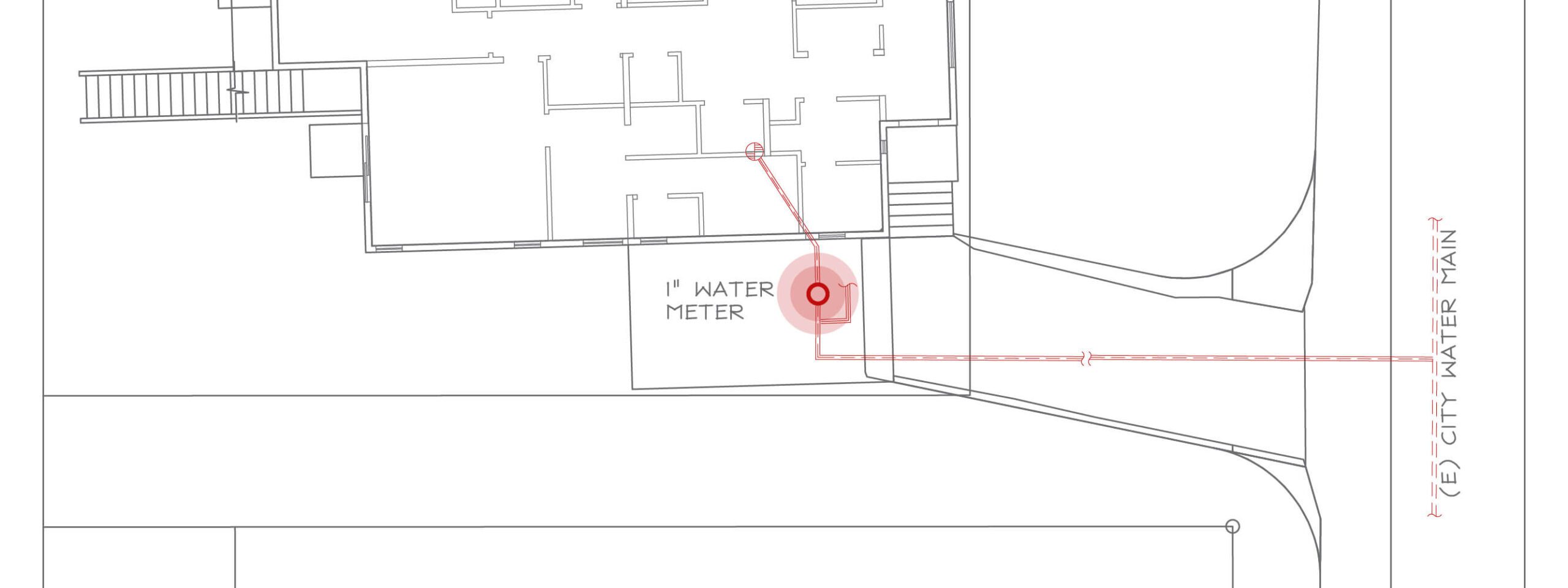Freeze Protection in Residential Fire Sprinkler Systems
What happens to a sprinkler system when it freezes? In the winter months when the water inside a sprinkler pipe freezes and expands, it can rupture the pipe, potentially flooding a dwelling and resulting in costly water damage when the pipe eventually thaws. To avoid this outcome, a fire sprinkler designer has several design options at their disposal. In this article we will discuss these freeze protection methods and their proper implementation.
When is Freeze Protection Needed?
How do we determine if our home sprinkler system will need freeze protection? Per NFPA 13D §9.1.2.1, a system is required to be protected from freezing if any portion of the system cannot be maintained at 40° F at all times. In practice, perpetually maintaining at least 40° F is very plausible in the interior of a home, assuming the homeowner isn’t away on vacation. However, we must also consider the unheated concealed spaces such as attics, where the sprinkler pipe will be located. Depending on an attic’s insulation and ventilation capacity, the interior attic temperature can be anywhere from 0 to 20 degrees warmer than outside temps, though this temperature should ultimately be field-verified. It is important to note that construction methods and standards of insulation vary by state. States such as Washington or Colorado for example often have rigorous requirements for home insulation, negating the need for additional freeze protection. Warmer states like California, however, will commonly require an additional method of freeze protection in addition to insulation.
NFPA 13D (§9.1.2.2) tells us that the average annual extreme minimum temperature of our project location is the value we should use to decide if we need freeze protection. This minimum temperature can be obtained from several NFPA approved sources such as the National Oceanic and Atmospheric Administration, National Weather Service, USDA Plant Hardiness Zone, etc.

Figure 2: Climate zones affecting fire sprinkler freeze protection (Source: U.S. Department of Commerce, Census Bureau; National Oceanic and Atmospheric Administration (NOAA), National Ocean Service (NOS), National Geodetic Survey (NGS))
Types of Residential Freeze Protection
- Maintaining 40º F or above: the first option to prevent frozen pipes is to simply ensure that all components of the system are always maintained at or above 40° F. This can be accomplished by providing sufficient insulation over the pipe, running the pipe in warm spaces, or otherwise heating the areas which contain the sprinkler pipes. The annex of NFPA 13D (§A.9.1.1) illustrates several methods for the installation of sprinkler pipe insulation.

Figure 3: NFPA 13D guidance showing insulation methods to prevent sprinkler pipe freezing in joist cavities. Source: National Fire Protection Association (NFPA).
- Designing an Antifreeze Sprinkler System: For many single-family homes, an antifreeze sprinkler system is a cost-effective and popular option. In this scenario, listed antifreeze is contained in the overhead sprinkler pipes instead of water. A backflow preventer at the sprinkler riser prevents antifreeze from contaminating the potable water supply, as well as preventing dilution of the antifreeze with water. Should a sprinkler be activated, a limited amount of antifreeze will discharge onto the fire followed by water from the municipal or stored water supply. We’ll go further into detail on the specifics of antifreeze systems later in this article.
- Designing a Dry Sprinkler System: A dry sprinkler system is a system in which pressurized air is pumped into the overhead sprinkler pipe instead of water. When a sprinkler is activated, the pressurized air escapes and the resulting pressure drop is detected by a dry pipe valve. This valve then allows water to flow to the system. As this type of system is more complex and costly than other methods, it is not commonly seen in residential applications.
- Heat Tracing: Heat tracing is a freeze-protection method where heating cables are wrapped around or taped onto the sprinkler pipe itself. This option is uncommon in residential applications, as tracing wire listed for fire sprinkler applications can be cost-prohibitive for single family homes.
How to Design an Antifreeze Sprinkler System
As antifreeze systems are the most common system type for residential dwellings that need freeze protection, we’ll take some time to delve deeper into their mechanics. A system designed to contain antifreeze will require an assortment of specialized components. Let’s look at each in detail.
- Listed Antifreeze: Why is it so important that antifreeze be, ‘listed’? As was discovered by several tragic incidents, improperly mixed concentrations of antifreeze can actually be flammable and literally add fuel to a fire. As of the 2013 edition of NFPA 13, only properly tested and approved (‘listed’) brands of antifreeze are permitted. Currently listed antifreeze products are available from FreezeMaster, Noble, and Tyco Fire Products.
- Reduced Pressure Backflow Preventer: Due to its toxicity, it is critical that antifreeze not be allowed to backflow into the municipal and/or potable water supply. To that end, a reduced pressure (RP) backflow preventer must be added to the fire sprinkler riser. An RP backflow provides the highest level of safety of any backflow type, with multiple fail-safes and redundancies.
- Antifreeze Expansion Chamber: In the presence of high temperatures, antifreeze will expand and increase the pressure inside the overhead sprinkler pipes. This can result in damage to the system or leakage from the sprinklers themselves. An expansion chamber provides a method for pressure relief during temperature fluctuations.
Conclusion
In colder climates, water-based sprinkler systems cannot be installed as usual without some extra consideration, or else we run the potential risk of flooded homes and costly repairs down the road. NFPA provides us with several approved methods to protect our systems, though in the scope of residential dwellings, antifreeze systems will be the most commonplace. By knowing when and how to protect home sprinkler systems, we can keep said systems structurally sound and primed to fight potential fires for a long time to come.



